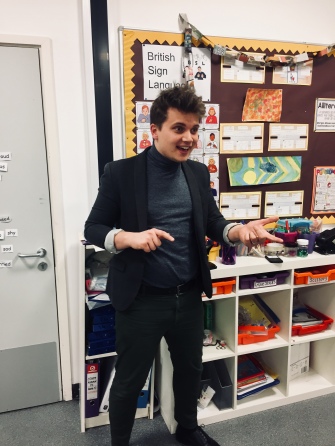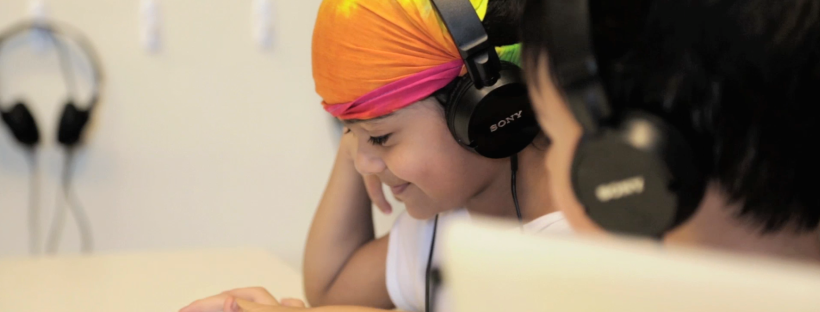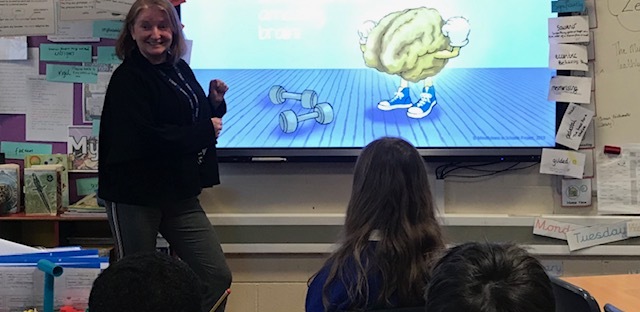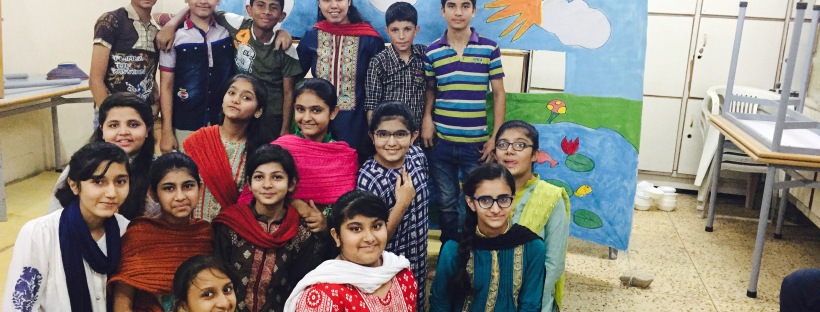Shabnam Gulamhussen was teaching in the Ismaili Religious Education Centre in Lisbon, Portugal, when she conducted her action-research in 2016. In her investigation into the use of collaborative writing, she aimed at understanding the challenges and opportunities of implementing collaborative writing in the classroom; the role of group discussion in the process of co-authoring texts; and to collect students’ accounts of their collaborative writing experience. Her findings suggest that collaborative writing is a complex social activity entailing several challenges concerning the nature of tasks, type of grouping, power relations, conflict, and ownership of texts. These require the teacher to be a careful planner and organiser of authentic collaborative writing tasks while building an emotionally safe classroom environment. Her study highlights that in collaborative writing tasks, group discussion engages students in productive talk for planning, writing, and providing critical peer feedback. The report concludes by stressing the potential of collaborative writing in promoting content learning and development of interpersonal skills.
How do teachers create inclusive learning environments for bilingual pupils and how do learners respond?
Ivana Lalovic explores what shapes teachers’ inclusive practice for bilingual learners, what this looks like in the classroom, and how pupils respond to this in turn. Existing research acknowledges the breadth of diversity contained under the ‘English as an Additional Language’ (EAL) label, along with a broad spectrum of theories and methods for supporting these learners; with this in mind, Ms Lalovic was interested to see how teachers navigate these complexities within their classroom. Most importantly, she was keen to understand how the learners at the heart of this issue felt about their classrooms. Given the importance of the individual voice to this research, a case study approach felt most appropriate, conducted through a series of observations and interviews. Above all else, analysis of results firmly underlines the importance of affirming pupils’ identities as members of the classroom community to be central to good practice.
What happens when I introduce tiered tasks and flexible grouping to create differentiation?
Sehrish Shikarpurya is currently a doctoral student studying special education. She completed this research in 2016 in a religious education classroom in New York, United States. For her MTeach degree at the Institute of Education, London (now the UCL Institute of Education), she explored the impact of differentiated instruction using two specific approaches: tiered tasks and flexible grouping. Differentiation is a learner-centered approach that aims to teach pupils according to how they learn best. Although there are many tiers to differentiation, research has mainly focused on assessment and content. This means that educators have found strategies to provide a ‘menu’ of assessments and how the content is formulated. Ms Shikarpurya’s study highlights two main approaches to differentiate the delivery of the content to understand its impact on student learning. Her study suggested that differentiated instruction resulted in a strengthened classroom community, increase in student motivation, focus on student voice in the classroom, and a postive impact elswhere in a range of learning contexts. Differentiated instruction not only impacts pupils’ learning of specific subjects, but it also improves overall success.
Investigating How Regular Mindful Practice Affects Children in Year 6
Natasha Dodwell is a Year 6 teacher in a state primary school in West London who recently completed the Master of Teaching (MTeach) degree at the UCL Institute of Education. Her dissertation looked at the impact of regular mindful practice for children in her Year 6 class. Mental health amongst primary children has become of great concern recently with recognition that schools are at the frontline of mental health systems for both younger pupils and adolescents; many children are struggling with difficult conditions including depression and anxiety, and, if left unaddressed, these can form the basis for further problems in adulthood; furthermore, Year 6 (with the pressure of SATs and secondary transition) can be a very challenging year for pupils, their parents and teaching staff. The practice of mindfulness offers a promising and cost-effective means to support the development of mental well-being in schools, and had been a long-term interst to Mrs Dodwell. Before carrying out the research, she had been a practitioner of mindfulness for some years, and had completed training with MiSP (Mindfulness in School Project) qualifying her to deliver the Paws b programme to primary children. This Paws b package became the core of the research, and was delivered by Mrs Dodwell to her Year 6 class over twelve weeks in weekly 30-minute sessions. To create data, her pupils completed questionnaires at three points in the programme, participated in class discussions, and in small focus groups. The findings highlighted several themes, with the children arguing that participating in the Paws b programme had made them calmer, happier and more able to concentrate. Mrs Dodwell continues to teach the programme to each new cohort of her pupils and is hoping to extend these lessons to the wider body of the school- timetables permitting.
The Role of a Positive Emotional Learning Environment in a Secondary Religious Education Classroom
Alina Daya is an educator by profession, and recently completed her Masters in Teaching (MTeach) degree at the University College London (UCL). Her dissertation looked at the impact of a positive emotional learning environment in a classroom, and the research was conducted in a classroom of Grade 8 students at a supplementary school in Toronto, Canada, part of a network of religious education centres run by the Ismail community. Ms Daya used existing literature to establish what a positive emotional learning environment looked like. She then used questionnaires, focus groups and student journals to gain a student perspective on what best supports them in their education. There is a wide spectrum of research on how the physical space can hinder or enhance student learning, however there is very little research that focuses on the emotional learning space, and the factors that contribute to it. The literature suggests that there are certain needs that students require in order to thrive in their educational settings. This study found that by creating an emotionally positive and secure environment, student learning was enhanced, students were more confident, and that participation in classroom activities and discussions increased. However, Ms Daya’s initial research focus changed as she worked on her inquiry, and she found herself focusing heavily on the impact of student teacher relationships and how those specifically contributed towards student learning. Daya also noted several key factors that impacted the intangible classroom environment: she concluded that although physical and social spaces are significant elements that contribute towards student learning, emotional environments are just as vital to establish in any given classroom.
Psychodynamic Incidents in Teaching
If you’ve ever had some sort of therapy, you might be familiar with psychodynamic phenomena (projection, transference, counter-transference, desire). For those who work in the various ‘psy’ professions, the existence of these inter-personal phenomena is largely uncontroversial, because these forces are at work whenever people interact, and are thus there in normal life as much as on the psychiatrist’s couch. If this is indeed the case, then they must also be at play in everyday classrooms. But to what degree, and to what effect? – and if you’re interested in studying it, how do you create data exploring these issues?
The MTeachJournal editor has recently had published in the London Review of Education an article that looks at these issues. The article can be dowloaded for free, here.
The Role of Teacher Feedback in Promoting the Use of Critical Thinking Skills in a Religious Education Classroom
Hina Amirali is a Religious Education (RE) teacher based in Karachi, Pakistan where she conducted her research in 2017. Her research was based on her observations in the UK mainstream schools where she observed how teachers’ feedback contributed to the promotion of critical thinking skills in young learners. She was intrigued by this idea and her reflections both as a teacher and a learner enabled her to hypothesise that teacher feedback can play a significant role in promoting the use of critical thinking for children in a RE classroom. Hence, she designed her practice-based enquiry (PBE) for her Masters of Teaching aimed at exploring the role of teacher feedback in promoting the use of critical thinking skills amongst pupils in a RE classroom using an action research framework. The study made use of teacher feedback interventions in various forms including written feedback, verbal feedback, questioning as a feedback tool, project-based feedback, and customized feedback forms over a period of ten weeks. Quantitative and Qualitative data was gathered with the help of questionnaires, focus group discussions, document analysis of students’ work, and teacher-researcher reflective journal.
Reading, Writing, Oral Communication and Social Learning: What happens when we use Drama?
 Nick Bentley is a Lead Practitioner for Access & Inclusion and Drama at an all-girls Secondary School in East London. In the spring term of 2017 he conducted an investigation into the use of drama in teaching William Shakespeare’s Romeo and Juliet, and examined the impact of this on five students in a Year Nine “Nurture Group” class targeted at teaching Literacy and Social Skills. Drawing upon data including a teacher journal, excerpts of student writing and the reflective comments of teaching assistants, the investigation concluded that drama can complement young people’s reading, writing, oral communication and social skills, and contribute to giving them a voice.
Nick Bentley is a Lead Practitioner for Access & Inclusion and Drama at an all-girls Secondary School in East London. In the spring term of 2017 he conducted an investigation into the use of drama in teaching William Shakespeare’s Romeo and Juliet, and examined the impact of this on five students in a Year Nine “Nurture Group” class targeted at teaching Literacy and Social Skills. Drawing upon data including a teacher journal, excerpts of student writing and the reflective comments of teaching assistants, the investigation concluded that drama can complement young people’s reading, writing, oral communication and social skills, and contribute to giving them a voice.
Exploring Lesson Study as professional development for inclusive pedagogy in secondary Mathematics
Perdita Hatton-Brown is a SENCO and specialist SEND teacher. She leads the Personalisation Department in a secondary academy for girls in West London. The school has a mixed demographic, with high numbers of students with additional learning needs, economic disadvantange and for whom English is an additional language. In the course of her studies on the MTEACH Special Educational Needs, she had become interested in Lesson Study as a way to develop ‘universal interventions’ at a whole class teaching level for learners with Special Educational Needs or Disabilities. Her work documents the process and results of Action Research into using Lesson Study to develop inclusive teaching of Mathematics with Year 9 students, and was carried out in her school in 2015.
How can I encourage my Year 7 learners of Spanish to be autonomous when presented with a range of texts to read?
Hannah Sharma is Assistant Headteacher of a school in Brixton, south London. She undertook this piece of research as Head of Languages in the academic year 2015-16 in response to changes in the assessment regime at GCSE level (the UK school certificate, generally taken at age 16). Her research looked into exploring a list of strategies recommended by Harris and Snow (2004:25) in conjunction with Harris’ (2000) six-stage process of strategy teaching, in order for beginner learners of Spanish to become less reliant on, and expectant of, teacher help. She had two focus groups, selected on the basis of prior attainment (as defined by their Key Stage 2 data), and wanted to look into how pupils with different histories of attainment grew in confidence and resilience in their approach to reading in a foreign language. She found that a change occurred in her classroom, and that with explicitly taught strategies and practice, pupils became markedly more autonomous and confident readers, relying less on the teacher and drawing more on their own resources.











